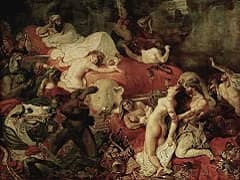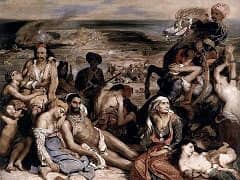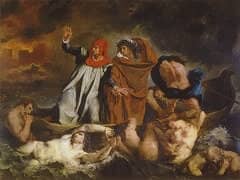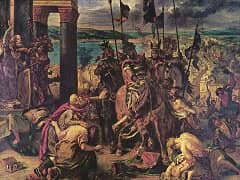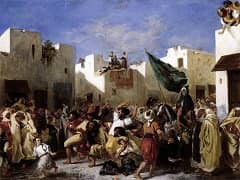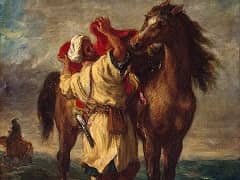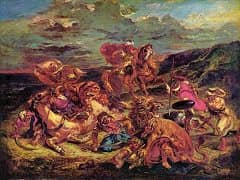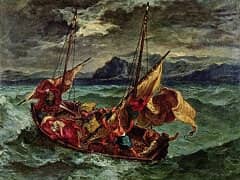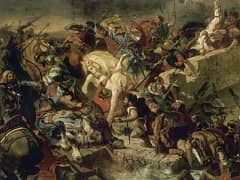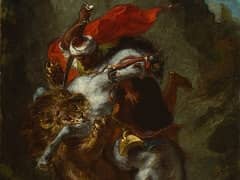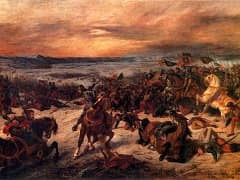Greece on the Ruins of Missolonghi by Eugene Delacroix
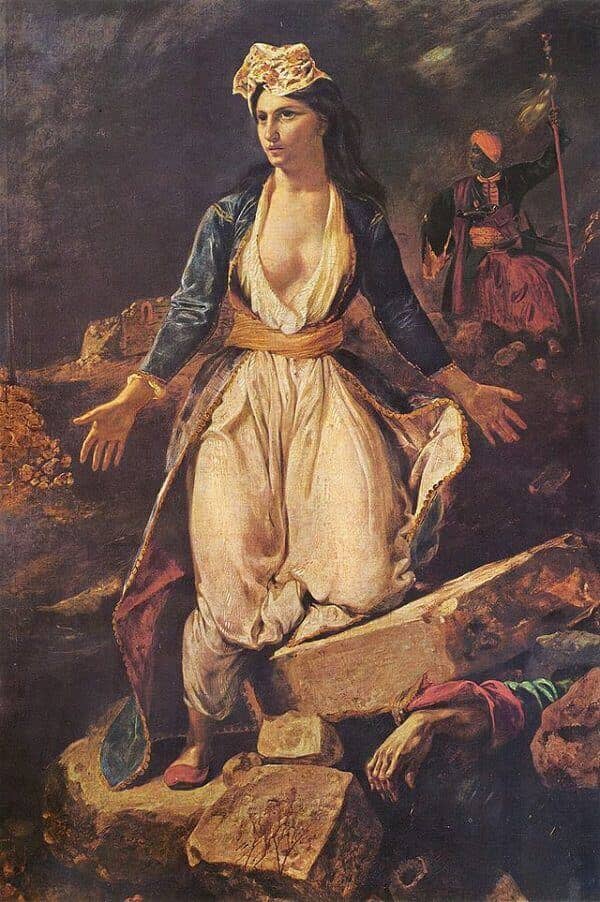
The Greek struggle for independence was to be of special inspiration to Delacroix during this period: with The Massacre of Chios from the Salon of 1824 and the Scene of the Current War between Turks and Greeks of the Salon of 1827, this constitutes yet another aspect of the struggle waged by the Hellenes. Missolonghi was successively besieged in 1822 and 1823. It was during this second siege that Byron died, on April 9, 1824. But the city, once more surrounded, had only four thousand men to pit against the Turkish army of thirty-five thousand, which also had naval support. The last defenders blew themselves up with their wives and children on April 22, 1826, and the city fell to the Turks.
This is the significance of these ruins on which we see Greece sinking, personified by a young woman whose torso is modeled in a warm light and whose expression clearly evinces both distress and the will to survive. For, if Greece has a broken heart, she is not in fact expiring, but will rise again to win the war for independence.


